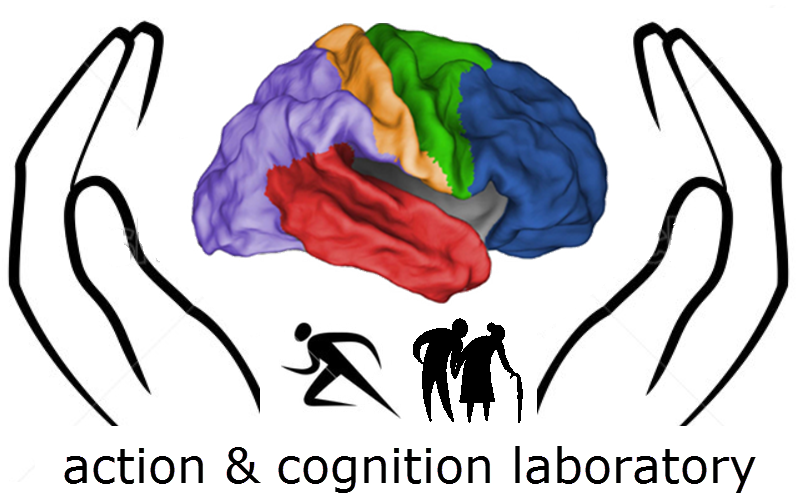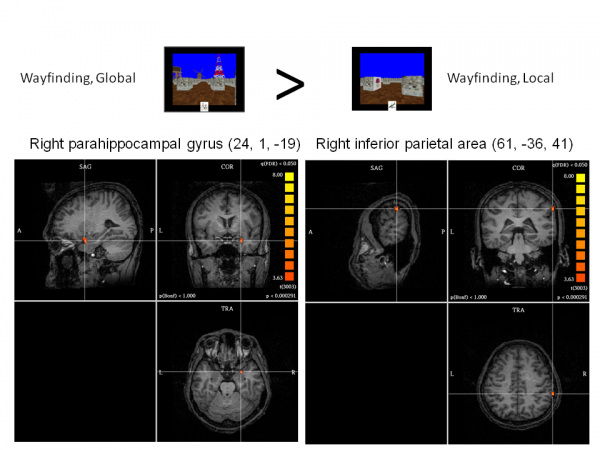Difference between revisions of "Main page"
From ACL@NCU
| Line 1: | Line 1: | ||
'''Welcome to Action & Cognition Laboratory (ACL) at Institute of Cognitive Neuroscience[http://icn.ncu.edu.tw], National Central Unviersity[http://ncu.edu.tw], Taiwan!!''' | |||
---- | |||
Go to Chinese Home Page中文首頁[http://acl.ncu.edu.tw/neuroimaging/wiki/index.php/%E8%A1%8C%E5%8B%95%E8%88%87%E8%AA%8D%E7%9F%A5%E5%AF%A6%E9%A9%97%E5%AE%A4] | |||
{|width="60%" | |||
|[[File:Lab01.JPG|600px]] | |||
|- | |||
|From left to right: Jason Han, Liang-Wei Kuo, Jyh-Jong Hsieh, Maggie Lin, Zai-Fu Yao, Erik Chang, Chiawei Li, Yi-Chu Chen, Sylvia Chiu | |||
|- | |||
|[[File:f_05pic1.jpg|600px]] | |||
|- | |||
|The main purpose of dealing with external information from animal brains is to make movements that can change the condition of animal themselves or the environment. As a result, the brain areas that are responsible for processing various sensory perceptions, are closely related to neural networks and functional interactions of the brain areas that are responsible for planning and executing. The Action and Cognition Laboratory was founded by Dr. Eric Chang in 2006, the research focuses on exploring the characteristics of human behaviour control and the brain mechanisms of influencing these characteristics. Under the general orientation, below are research topics we are currently running: | |||
|- | |||
|1. The influence of obstacles on reaching or grasping | |||
|- | |||
|2. The influence of conscious state on action priming | |||
|- | |||
|3. The differences between gender and age of spatial navigation and other brain mechanism | |||
|- | |||
|4. The gender difference of spatial vs. non-spatial motor mapping | |||
|- | |||
|5. The influence of central executive function of working memory on training and transfer in the elders | |||
|- | |||
|6. The gender difference of gaze direction on orienting of spatial attention | |||
|- | |||
|In terms of observing and recording behaviour, our lab now has [[PhaseSpace]] systems for motion tracking and position sensing, which could digitised the limb performance as 3D position online for examiners to analyse body movements. Due to needs of displaying actual items for the experiments of exploring human behaviour control, our lab equipped [[Plato Visual Occlusion Spectacles]], which are able to change rapidly between transparent and light scattering and further control the timing of when visual information is presented to an experimental subject. | |||
|- | |||
|[[File:f_05pic3-2.jpg]] | |||
|- | |||
| In relation to exploring the brain mechanism, our lab has been cooperating with [[Integrated Brain Research Unit from Taipei Veterans General Hospital]] for fMRI techniques, exploring brain areas of spatial navigation and working memory. We have also been collaborating with [[Brain Research Centre from National Chiao Tung University]] for the technique of combining virtual reality with analysis of brainwave frequencies, which exploring the changes of brain potential that relates to spatial navigation. | |||
|- | |||
| | |||
|- | |||
|} | |||
[[File:F_05pic4.png|600px]] | |||
<p> | |||
{| | |||
|- | |||
|'''Lab Members''' | |||
|- | |||
|'''Laboratory Directors''' | |||
|- | |||
|colspan="2"|[[Dr. Eric Chang]](Click Here to download CV[http://icn.ncu.edu.tw/images/cv_erikchang_ch_2010.pdf]) | |||
|- | |||
|[[Lab members | Lab Members]] | |||
|- | |||
|'''Students'''||'''Academic Year'''||'''Dissertation Areas''' | |||
|- | |||
|Sylvia Chiou||2013||Guidance or Interference? Augmented Feedback Benefits Bimanual Coordination Even After Removal | |||
|- | |||
|Zai-fu Yao||2013||Influence of Aging and Physical Activity on Cognitive Control and Visual Search | |||
|- | |||
|Maggie Lin||2014|| | |||
|- | |||
|'''Alumni'''||'''Year of Study'''||'''Theses''' | |||
|- | |||
|Jyh-Jong Hsieh||2008~20011||On the Extension of Peripersonal Space: Remote Tool Use and Multisensory Integration | |||
|- | |||
|Chian-Huei Tang||2008~2012||How Do Parameters of Motor Response Influence Selective Inhibition? Evidence from the Stop-signal Paradigm | |||
|- | |||
|Jason Zhi-Xiang Han||2006~2008||Influence of the Consciousness State of Action Observation on Action Priming | |||
|- | |||
|Wen-Jing Lin||2007~2010||The Contributions of Global and Local Object Landmarks in Human Wayfinding Behavior ) | |||
|- | |||
|Hung-Chi Li||2007~2010||Gender Differences in the Orienting of Visuospatial Attention: The Influences of Cue Types and Expectancy | |||
|- | |||
|Tzu-chen Lung||2007~2010||On the training and transfer of task switching | |||
|- | |||
|'''Research Assistants'''||'''Date of Starting Work'''||'''Responsible Research Projects''' | |||
|- | |||
|Jyh-Jong Hsieh||2012||Developing mobile devices for measuring and enhancing the cognitive ability and physical activity in middle-aged and elderly workers | |||
|- | |||
|Chia-Wei Lee||2013||An fMRI Investigation of sensorimotor and numerical magnitude representations under suggestion | |||
|- | |||
|Yi-Chu Chen||2014||An fMRI Investigation of sensorimotor and numerical magnitude representations under suggestion | |||
|- | |||
|'''Previous Research Assistants'''||'''Tenure''' ||'''Responsible Research Projects''' | |||
|- | |||
|Shuo-Jie, Huang||2010~2012||Blueprint development project for the Medical Equipment Industry: An Innovative Service System for Stress-relief and LOHAS Which Integrates Personal Healthcare[NSC99-3114-B009-001]) | |||
|- | |||
|Lin-Zhao, Liu||2010~2011||Exploration of the Functional and Structural Brain Mechanisms Underlying the Improvement of Central Executive Functions Induced by Physical Exercise in the Middle-Aged and Old Adults: a Fmri and Diffusion Tensor Imaging Study [NSC99-2410-H008-065]) | |||
|- | |||
|Rung-Yu Tzeng||2010||Blueprint development project for the Medical Equipment Industry: An Innovative Service System for Stress-relief and LOHAS Which Integrates Personal Healthcare [NSC99-3114-B009-001]) | |||
|- | |||
|Yvonne J.Y. Lai||2008~2010||Effects of Age and Structural Lateral Compliance on Forward-and-up Stepping Movements [NSC95-2627-E009-001];Sex Differences in Functional and Structural Brain Representations of Spatial Navigation and Motor Control---A Fmri and Diffusion Tensor Imaging Study [NSC96-2413-H008-003-MY3]) | |||
|- | |||
|Liang-Dien Hsieh ||2008~2009||Sex Differences in Functional and Structural Brain Representations of Spatial Navigation and Motor Control---A Fmri and Diffusion Tensor Imaging Study[NSC96-2413-H008-003-MY3]) | |||
|- | |||
|Brenda Yu||2007~2008||Effects of Age and Structural Lateral Compliance on Forward-and-up Stepping Movements [NSC95-2627-E009-001]) | |||
|- | |||
|Kiwi Chung||2008~2009||「Eco-City---健康樂活城」智慧行動生活科技區域整合中心[NSC98-2218-E009-007]) | |||
|} | |||
Latest revision as of 03:07, 30 July 2014
Welcome to Action & Cognition Laboratory (ACL) at Institute of Cognitive Neuroscience[1], National Central Unviersity[2], Taiwan!!
Go to Chinese Home Page中文首頁[3]
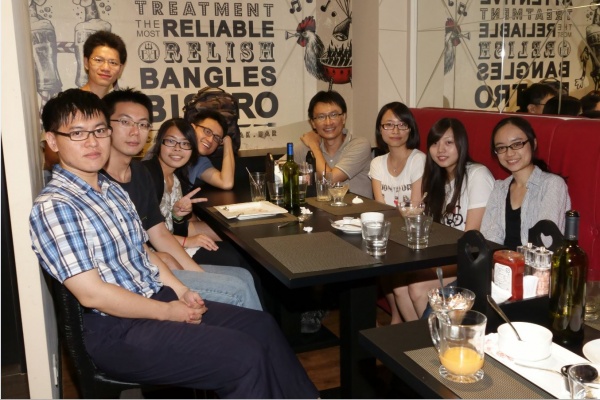
|
| From left to right: Jason Han, Liang-Wei Kuo, Jyh-Jong Hsieh, Maggie Lin, Zai-Fu Yao, Erik Chang, Chiawei Li, Yi-Chu Chen, Sylvia Chiu |
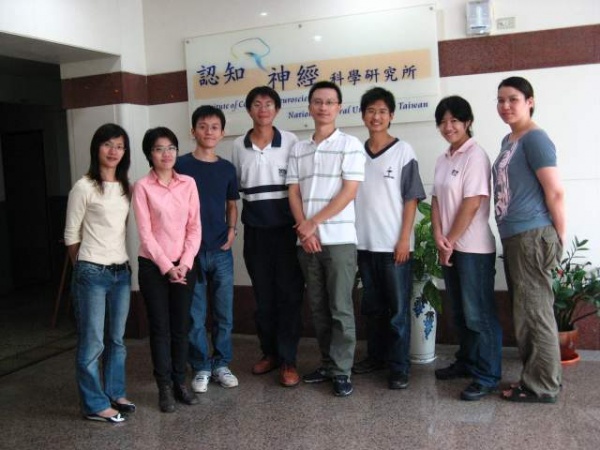
|
| The main purpose of dealing with external information from animal brains is to make movements that can change the condition of animal themselves or the environment. As a result, the brain areas that are responsible for processing various sensory perceptions, are closely related to neural networks and functional interactions of the brain areas that are responsible for planning and executing. The Action and Cognition Laboratory was founded by Dr. Eric Chang in 2006, the research focuses on exploring the characteristics of human behaviour control and the brain mechanisms of influencing these characteristics. Under the general orientation, below are research topics we are currently running: |
| 1. The influence of obstacles on reaching or grasping |
| 2. The influence of conscious state on action priming |
| 3. The differences between gender and age of spatial navigation and other brain mechanism |
| 4. The gender difference of spatial vs. non-spatial motor mapping |
| 5. The influence of central executive function of working memory on training and transfer in the elders |
| 6. The gender difference of gaze direction on orienting of spatial attention |
| In terms of observing and recording behaviour, our lab now has PhaseSpace systems for motion tracking and position sensing, which could digitised the limb performance as 3D position online for examiners to analyse body movements. Due to needs of displaying actual items for the experiments of exploring human behaviour control, our lab equipped Plato Visual Occlusion Spectacles, which are able to change rapidly between transparent and light scattering and further control the timing of when visual information is presented to an experimental subject. |
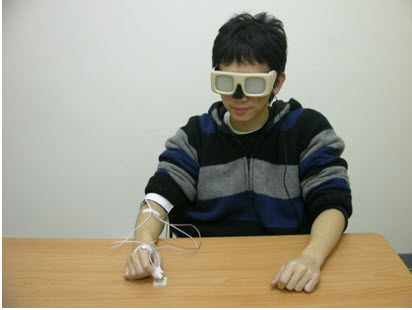
|
| In relation to exploring the brain mechanism, our lab has been cooperating with Integrated Brain Research Unit from Taipei Veterans General Hospital for fMRI techniques, exploring brain areas of spatial navigation and working memory. We have also been collaborating with Brain Research Centre from National Chiao Tung University for the technique of combining virtual reality with analysis of brainwave frequencies, which exploring the changes of brain potential that relates to spatial navigation. |
| Lab Members | ||
| Laboratory Directors | ||
| Dr. Eric Chang(Click Here to download CV[4]) | ||
| Lab Members | ||
| Students | Academic Year | Dissertation Areas |
| Sylvia Chiou | 2013 | Guidance or Interference? Augmented Feedback Benefits Bimanual Coordination Even After Removal |
| Zai-fu Yao | 2013 | Influence of Aging and Physical Activity on Cognitive Control and Visual Search |
| Maggie Lin | 2014 | |
| Alumni | Year of Study | Theses |
| Jyh-Jong Hsieh | 2008~20011 | On the Extension of Peripersonal Space: Remote Tool Use and Multisensory Integration |
| Chian-Huei Tang | 2008~2012 | How Do Parameters of Motor Response Influence Selective Inhibition? Evidence from the Stop-signal Paradigm |
| Jason Zhi-Xiang Han | 2006~2008 | Influence of the Consciousness State of Action Observation on Action Priming |
| Wen-Jing Lin | 2007~2010 | The Contributions of Global and Local Object Landmarks in Human Wayfinding Behavior ) |
| Hung-Chi Li | 2007~2010 | Gender Differences in the Orienting of Visuospatial Attention: The Influences of Cue Types and Expectancy |
| Tzu-chen Lung | 2007~2010 | On the training and transfer of task switching |
| Research Assistants | Date of Starting Work | Responsible Research Projects |
| Jyh-Jong Hsieh | 2012 | Developing mobile devices for measuring and enhancing the cognitive ability and physical activity in middle-aged and elderly workers |
| Chia-Wei Lee | 2013 | An fMRI Investigation of sensorimotor and numerical magnitude representations under suggestion |
| Yi-Chu Chen | 2014 | An fMRI Investigation of sensorimotor and numerical magnitude representations under suggestion |
| Previous Research Assistants | Tenure | Responsible Research Projects |
| Shuo-Jie, Huang | 2010~2012 | Blueprint development project for the Medical Equipment Industry: An Innovative Service System for Stress-relief and LOHAS Which Integrates Personal Healthcare[NSC99-3114-B009-001]) |
| Lin-Zhao, Liu | 2010~2011 | Exploration of the Functional and Structural Brain Mechanisms Underlying the Improvement of Central Executive Functions Induced by Physical Exercise in the Middle-Aged and Old Adults: a Fmri and Diffusion Tensor Imaging Study [NSC99-2410-H008-065]) |
| Rung-Yu Tzeng | 2010 | Blueprint development project for the Medical Equipment Industry: An Innovative Service System for Stress-relief and LOHAS Which Integrates Personal Healthcare [NSC99-3114-B009-001]) |
| Yvonne J.Y. Lai | 2008~2010 | Effects of Age and Structural Lateral Compliance on Forward-and-up Stepping Movements [NSC95-2627-E009-001];Sex Differences in Functional and Structural Brain Representations of Spatial Navigation and Motor Control---A Fmri and Diffusion Tensor Imaging Study [NSC96-2413-H008-003-MY3]) |
| Liang-Dien Hsieh | 2008~2009 | Sex Differences in Functional and Structural Brain Representations of Spatial Navigation and Motor Control---A Fmri and Diffusion Tensor Imaging Study[NSC96-2413-H008-003-MY3]) |
| Brenda Yu | 2007~2008 | Effects of Age and Structural Lateral Compliance on Forward-and-up Stepping Movements [NSC95-2627-E009-001]) |
| Kiwi Chung | 2008~2009 | 「Eco-City---健康樂活城」智慧行動生活科技區域整合中心[NSC98-2218-E009-007]) |
